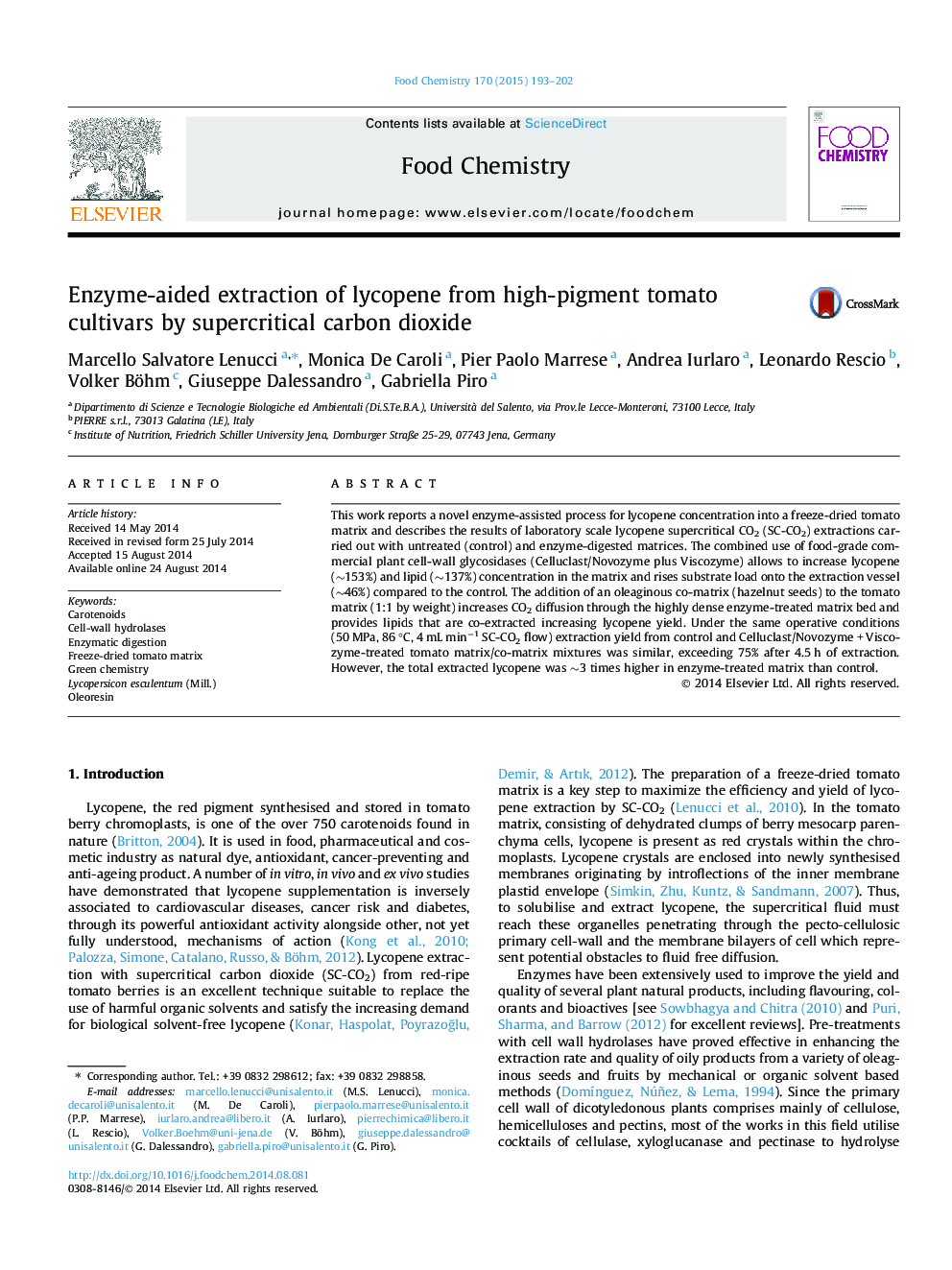| کد مقاله | کد نشریه | سال انتشار | مقاله انگلیسی | نسخه تمام متن |
|---|---|---|---|---|
| 1185556 | 1492121 | 2015 | 10 صفحه PDF | دانلود رایگان |
• An enzyme-assisted process for lycopene extraction by supercritical CO2 is described.
• Digestion with cell-wall glycosidases increases lycopene concentration in the matrix.
• A tomato matrix with a lycopene titre up to 27 mg g−1 f-dm has been obtained.
• The ultrastructural characteristics of the tomato matrix have been observed by SEM.
• Addition of an oleaginous co-matrix is essential to improve lycopene extraction yield.
This work reports a novel enzyme-assisted process for lycopene concentration into a freeze-dried tomato matrix and describes the results of laboratory scale lycopene supercritical CO2 (SC-CO2) extractions carried out with untreated (control) and enzyme-digested matrices. The combined use of food-grade commercial plant cell-wall glycosidases (Celluclast/Novozyme plus Viscozyme) allows to increase lycopene (∼153%) and lipid (∼137%) concentration in the matrix and rises substrate load onto the extraction vessel (∼46%) compared to the control. The addition of an oleaginous co-matrix (hazelnut seeds) to the tomato matrix (1:1 by weight) increases CO2 diffusion through the highly dense enzyme-treated matrix bed and provides lipids that are co-extracted increasing lycopene yield. Under the same operative conditions (50 MPa, 86 °C, 4 mL min−1 SC-CO2 flow) extraction yield from control and Celluclast/Novozyme + Viscozyme-treated tomato matrix/co-matrix mixtures was similar, exceeding 75% after 4.5 h of extraction. However, the total extracted lycopene was ∼3 times higher in enzyme-treated matrix than control.
Journal: Food Chemistry - Volume 170, 1 March 2015, Pages 193–202
